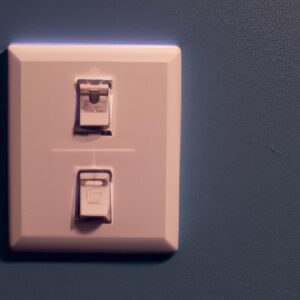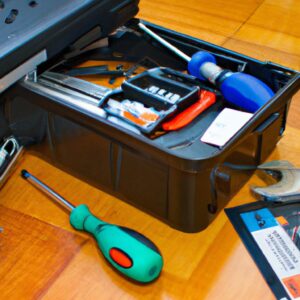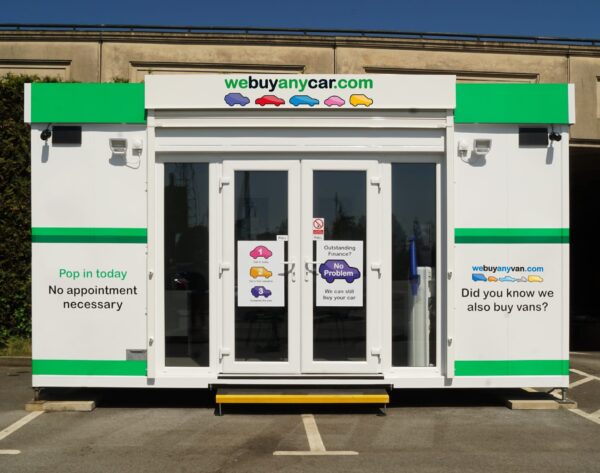Get Supercharged: Start Your Home Automation Journey Now!

Getting Started With Home Automation: Smart Devices Setup
Home automation is the process of using devices and technology to allow for automated and remote control of your household appliances. These devices, which are often connected through a home network, can be managed remotely from anywhere in the world. By investing in home automation, you can enjoy a wide range of benefits which range from increased convenience and control, to better savings on energy costs. In this guide, we’ll take you through the basics of getting started with home automation and the various components you’ll need.
What You Need to Get Started
The devices used for home automation are known as “smart devices”, and come in all shapes and sizes. Examples of these include light bulbs, thermostats, door locks, window shades, security cameras, and more. When purchasing a smart device, it is important to consider its features and capabilities. Be sure to research the types of devices available, read reviews, and compare prices to make sure you get the most bang for your buck!
Connecting the Devices and Setting Up Your Network
In order to get your home automation system up and running, you’ll need to establish a network connection. This can be done by selecting a router that supports Wi-Fi or Ethernet connections. Be sure to select a router that has enough bandwidth to handle all the devices you plan on connecting. Once the router is configured, you will need to connect each of the devices to the network. This is typically done by running an app that will discover the device, walk you through the setup process, and add the device to the network.
Creating and Configuring Your Home Automation System
Once all the devices are connected to the network and powered up, the next step is to configure the system. This involves setting up rules and preferences for when and how the devices respond. For example, you can set the lights to automatically turn on when you enter a room, and the thermostat to adjust to a preset temperature when you leave the house. You may also want to create scenes, which are combinations of settings that are activated with a single command. With the right configuration, you can make your home much more convenient and comfortable.
What You Need to Get Started
If you’re interested in automating your home, there are a variety of smart devices available to get you started. Smart devices range from connected lighting to security systems, allowing you to control and monitor your home from anywhere. This section will provide an overview of the different types of smart devices and their key features.
Lights, Switches, and Outlets
Smart lights and switches have come a long way in recent years. Modern devices allow you to turn on and off lights, switches, and outlets with just a voice command or the press of a button. They can also be programmed to create automated lighting scenes – perfect for when you want to relax in the evening or set a bright atmosphere when you’re entertaining. Smart switches and outlets can also be used to control larger appliances like fans and air conditioners.
Security Systems
Smart security systems provide added peace of mind. Many systems offer motion detection, video monitoring, and sound detection capabilities. Some advanced systems even allow you to monitor your home from anywhere in the world using an app on your phone. Many of these systems also connect to your smart home assistant, allowing you to control them with just your voice.
Thermostats
Smart thermostats allow you to adjust the temperature in your home from anywhere. They often come with schedule settings so you can easily program the temperature to match your needs. More advanced models include sensors that detect humidity levels and air quality, giving you full control over the environment in your home.
Connecting the Devices and Setting Up Your Network
Setting up a home automation network can be daunting, but it doesn’t have to be. An important first step is to select and set up a router that supports your home automation devices. You’ll then need to configure the network so that all of your devices can communicate with each other.
When choosing a router, look for one that offers the best coverage area, signal strength and data speeds. The higher the data speeds, the faster your system will be able to run. Some of the more advanced routers now offer mesh networking, giving you extended coverage areas.
Once you have selected and installed your router, you’ll need to configure your network. This includes assigning a password to your system, setting up a firewall and setting up encryption. If the router has Wi-Fi capabilities, make sure it is also protected with a secure password.
If you’re unfamiliar with setting up networks, it’s recommended that you seek professional assistance. A qualified technician can help you through the process, ensuring that your devices communicate with each other without interruption.
Creating and Configuring Your Home Automation System
Setting up your home automation system is one of the most enjoyable parts of transitioning to a smart home. It offers you the freedom to customize it in a way that best suits your needs.
The first step is to install the hub or controller, if your devices don’t come with one already. Depending on the type of system you are using, hooking up the hub could be as easy as plugging it into a wall socket or installing batteries. Many systems also allow you to connect wirelessly.
Once you have your hub ready, you can start connecting other devices to it. Most systems use proprietary protocols so be sure to check the technical specifications before buying any new device. Some brands also have their own app for setup.
When all your devices are connected, you can begin setting up your automation rules. This part can take a bit of trial and error but it’s worth it in the end. You can create custom routines and programs that will help you automate many everyday tasks.
For example, you could set up a program that turns off all lights and locks doors when you leave the house. Another example could be creating a routine that starts playing your favorite music when you wake up in the morning. The possibilities are endless!
Once all your automation rules are set up, you can sit back, relax and enjoy the convenience of living in a smart home.
Integrating Voice Assistance Capabilities
In the past few years, voice-controlled assistance technologies have been developed and are now available for home automation systems. These voice-activated systems allow users to control their home devices with verbal commands. With a voice assistant, you can access information and control a variety of smart devices in your home, such as lights, thermostats, security systems, and more. This article will provide an overview of the available voice assistant solutions, as well as how to integrate them into your home automation system.
Currently, the most popular voice assistance systems available are Google Home, Amazon Alexa, and Apple’s Siri. Each of these systems have slightly different capabilities and functions, but all allow you to control your home devices via voice commands. For example, you can use voice commands to turn lights on and off, adjust the temperature, and play music. You can also ask for information and receive answers from the assistant. Additionally, these systems can be integrated with many of the devices connected to your home automation system.
In order to integrate a voice assistant with your home automation system, you need to connect it to the same internet network. Once connected, you will need to configure the assistant within the software of your home automation system. Depending on the type of system you have, this may involve downloading an app or integrating it with compatible devices. Once you have connected and configured the assistant, you can begin controlling your home automation system by voice.
Integrating voice assistance capabilities into your home automation system is an easy and convenient way to control a number of devices throughout your home. With just a few simple steps, you can make your home even smarter and more efficient!
Sharing and Securing Your Home Automation System
In today’s connected world, one of the most important components of any home automation system is sharing with family members. Sharing smart home devices allows you to easily show off your system, as well as allow others to assist with tasks such as setting up automated lighting or playing music in different rooms. In addition, device sharing can help you manage and access devices from multiple locations.
Achieving a secure system is just as imperative as sharing. Although home automation can make life more convenient, it also provides access to your home’s sensitive data to cyber criminals. Therefore, the system must be designed with preventive security measures in place. These include password protection, two-factor authentication, encryption, and secure data storage.
The following steps will help you to share your home automation system with family members and ensure it is secure:
- Set Up Passwords: Create unique and secure passwords for all family members and grant them permission to access only the devices they need.
- Enable Two-Factor Authentication: Activate two-factor authentication on all accounts associated with your smart devices. This will pair your account with an additional form of identification, such as a code sent to your phone or another device.
- Encrypt Important Data: Secure important data by encrypting it using a virtual private network (VPN) or other encryption methods. This will protect the data from eavesdropping and other malicious activities.
- Secure Network with a Firewall: An effective firewall will protect your home network from malicious traffic by monitoring incoming and outgoing connections.
By taking the time to properly share and secure your home automation system, you can rest assured that your home is safe and secure.
Getting the Most Out of Your Home Automation Setup
With a home automation system, you can take advantage of many features that weren’t available before. You can have devices that respond to your voice commands, lights that turn on and off based on your presence or absence, and thermostats that can be adjusted remotely. But in order to get the most out of your setup, you need to ensure you have compatible accessories and unique ways of customizing it.
The first step involves finding compatible accessories. Many home automation systems come with their own proprietary hardware which limits what you can purchase. Therefore, it’s important to read up on the product before buying any additional components. Additionally, you can check online for popular third-party products and see if they are compatible with your existing hardware.
Once you have identified suitable accessories, you can begin the process of customizing your system. There are many unique ways to do this, such as programming the lights to turn on and off at specific times or setting up motion sensors to activate lights or music whenever you enter a room. You can also use voice commands to control various devices, giving you access to a wide range of features. With a bit of imagination and research, you can create a truly one-of-a-kind home automation experience.
Finally, it’s important to keep up-to-date with the latest trends and news about home automation. Doing so will help you stay ahead of the curve and always have the best features available. Additionally, reading up on customer reviews and feedback can be an invaluable source of information, giving you insight into what works and doesn’t work for others.
By taking these steps, you can ensure that you get the most out of your home automation setup and enjoy all the features and convenience it provides.
Common Troubleshooting and Maintenance Tasks
When it comes to troubleshooting and maintaining your home automation system, there are a few common issues that you should be aware of. Fortunately, these problems can usually be solved with some simple steps.
For example, unresponsive devices are a common issue. You may find that one or more of your smart devices stops responding to commands. This could be due to an outdated app or firmware, so it’s important to check for new updates and install them as necessary.
Another common issue is device connection problems. If one or more of your devices is not connecting properly, the first step is to check your network setup. Make sure the router is connected to your modem and that all the necessary ports are open for the devices you are trying to connect. Additionally, you may need to reset the device or factory reset the router depending on the issue.
Finally, errors in your home automation system can cause delays or glitches in your setup. This could be due to a conflicting command or a bug in the system. Before trying to solve this issue, double-check your setup and make sure that you have configured the system correctly. If the issue persists, then contact customer service for help from the manufacturer.
These are just a few of the common issues that you may encounter when using a home automation system. To help ensure that everything runs smoothly, always keep your system up-to-date and regularly perform maintenance tasks such as checking device connections and firmware updates.
Conclusion
By now, you should have a full understanding of how to get started with home automation. You should know what smart devices are, how to connect them and create your system, how to take advantage of voice assistance capabilities, how to ensure your system is secure, and how to unlock the full potential of your setup with compatible accessories. This guide has also provided guidance on how to troubleshoot and maintain your system, as well as what to do if things go wrong.
With this knowledge in hand, you now have everything you need to begin creating an automated home that fits your individual lifestyle. So, what are you waiting for? Get started on your journey towards a more comfortable and efficient lifestyle today!
Appendix A: Glossary of Home Automation Terms
Home automation refers to the process of controlling your home devices, appliances, and systems using a smartphone, laptop, or voice assistant device. It can make our lives simpler and more efficient – allowing us to control lights, shutters, locks, security systems, thermostats, and more from anywhere.
If you’re just starting out with home automation, you may be wondering what all those buzzwords mean. We’ve compiled a list of terms to help you understand the basics of home automation.
- Smart Device: A device that can be connected to a router over an internet connection. Often times, these devices can be controlled remotely via a smartphone or voice assistant device, making them “smart”.
- Router: A network device that transfers data between computers and other devices on a network. Routers are the lifeblood of a good home automation system.
- Network: A group of connected computers, or devices, that can communicate with each other. Wi-Fi is the most common type of network utilized in home automation.
- Hub: The central point of communication between a set of devices. A home automation hub acts as a middleman between all of your smart devices, allowing them to communicate and exchange data.
- Voice Assistance: Technology that utilizes artificial intelligence to interpret commands given by a user’s voice and carry them out. Examples include Amazon Alexa, Google Home, and Apple’s Siri.
- Integration: The ability of different systems to work together using a single interface. Home automation systems often integrate with existing home security systems for added convenience.
- Automation: The process of making a system run automatically. Home automation refers to using technology to automatically control your devices, appliances, and systems.
With this basic understanding of home automation terms, you’ll be ready to start building your system. Knowing the terminology will help you make smart decisions and get the most out of your home automation setup.
Appendix B: Smart Device Shopping Guide
When shopping for smart devices to set up your home automation system, there are plenty of options available. To ensure you make the right choice, it is important to understand what type of device you need and the features that would best suit your needs. This Appendix will provide a brief overview of the different types of smart devices and their features.
Smart Security Devices
Smart security devices allow you to monitor and secure your home from anywhere. They may include motion sensors, cameras, door locks, and more. Some devices even provide automatic alerts when an intruder is detected. Often, you can control and access these devices remotely from your smartphone or laptop.
Smart Lighting Devices
Smart lighting devices enable you to customize and control your lights from anywhere. They usually come in the form of light bulbs, but may also include switches and controllers. Features often include the ability to turn the lights on and off remotely, adjust the brightness, and program automated schedules.
Smart Appliances
These are appliances that can be controlled and monitored remotely. They may include refrigerators, ovens, dishwashers, and more. Smart appliances usually offer features such as manual or automated scheduling, activity monitoring, and remote control.
Smart Home Entertainment Devices
These devices allow you to access and control your audio and video entertainment systems from anywhere. They may include streaming players, sound bars, speakers, and more. Features usually include the ability to stream music and videos, access online content, and control devices individually or together.
Other Considerations
Before you purchase a smart device, consider its compatibility with other devices you have or plan to purchase. Also, think about the brand, reliability, range, and cost of the device. With these considerations in mind, you should be able to find the perfect device for your home automation system.
Appendix C: Professional Installation Resources
The process of setting up home automation can be quite daunting for those who do not have a background in technology. In such cases, it is best to consult with an expert who can provide professional assistance with the installation process. There are many professionals who offer their services for setting up home automation systems and this section will provide a few resources that could be useful for finding and connecting with them.
- Home Automation Installers Online Directory – This website offers a list of installers who specialize in home automation for a variety of budgets and needs.
- Smart Home Pros – This website connects customers with professionals who specialize in smart home installations and can provide personalized service.
- Pulse – This website offers an online marketplace of certified technicians who can help with the setup and integration of different devices.
- Resideo Connect – This website provides access to an extensive network of certified installers who offer consultation services as well as equipment installation.
Professional installation services can be expensive, but they can also save you a lot of time and effort in the long run. Consider researching these resources and hiring a professional installer if you feel the task is too overwhelming.
comments: 0






